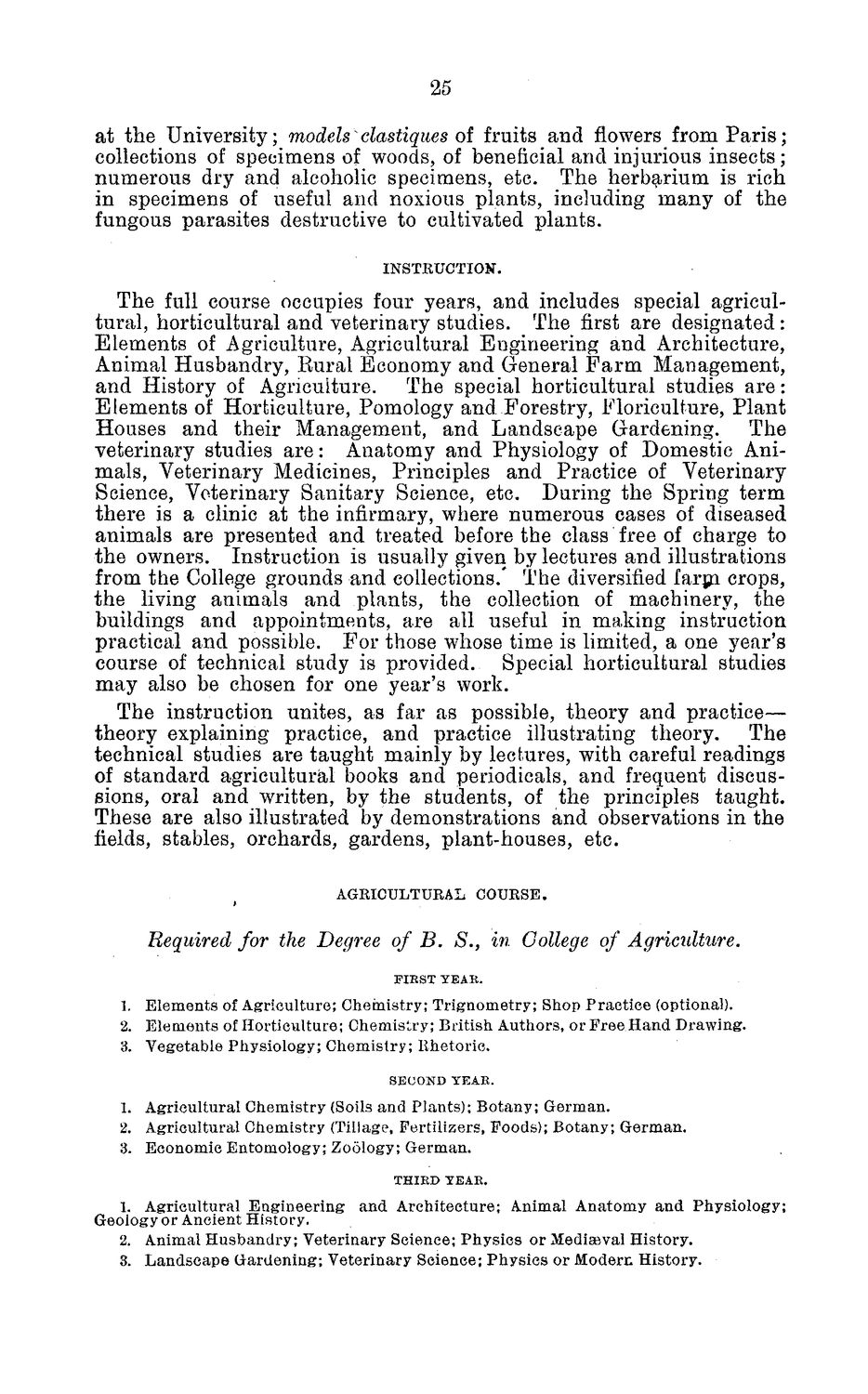| |
| |
Caption: Board of Trustees Minutes - 1884
This is a reduced-resolution page image for fast online browsing.

EXTRACTED TEXT FROM PAGE:
25 at the University; models clastiques of fruits and flowers from Paris; collections of specimens of woods, of beneficial and injurious insects; numerous dry and alcoholic specimens, etc. The herbarium is rich in specimens of useful and noxious plants, including many of the fungous parasites destructive to cultivated plants. INSTRUCTION. The full course occupies four years, and includes special agricultural, horticultural and veterinary studies. The first are designated: Elements of Agriculture, Agricultural Engineering and Architecture, Animal Husbandry, Rural Economy and General F a r m Management, and History of Agriculture. The special horticultural studies are: Elements of Horticulture, Pomology and Forestry, Floriculture, Plant Houses and their Management, and Landscape Gardening. The veterinary studies are: Anatomy and Physiology of Domestic Animals, Veterinary Medicines, Principles and Practice of Veterinary Science, Veterinary Sanitary Science, etc. During the Spring term there is a clinic at the infirmary, where numerous cases of diseased animals are presented and treated before the class free of charge to the owners. Instruction is usually given by lectures and illustrations from the College grounds and collections.' The diversified farm crops, the living animals and plants, the collection of machinery, the buildings and appointments, are all useful in making instruction practical and possible. For those whose time is limited, a one year's course of technical study is provided. Special horticultural studies may also be chosen for one year's work. The instruction unites, as far as possible, theory and practice— theory explaining practice, and practice illustrating theory. The technical studies are taught mainly by lectures, with careful readings of standard agricultural books and periodicals, and frequent discussions, oral and written, by the students, of the principles taught. These are also illustrated by demonstrations and observations in the fields, stables, orchards, gardens, plant-houses, etc. AGRICULTURAL COURSE. Required for the Degree of B. S., in College of Agriculture. FIEST YEAR. 1. Elements of Agriculture; Chemistry; Trignometry; Shop Practice (optional). 2. Elements of Horticulture; Chemistry; British Authors, or Free Hand Drawing. 3. Vegetable Physiology; Chemistry; Rhetoric. SECOND YEAR. 1. Agricultural Chemistry (Soils and Plants); Botany; German. 2. Agricultural Chemistry (Tillage, Fertilizers, Foods); Botany; German. 3. Economic Entomology; Zoology; German. THIRD YEAR. 1. Agricultural Engineering and Architecture; Animal Anatomy and Physiology; Geology or Ancient History. 2. Animal Husbandry; Veterinary Science; Physics or Mediaeval History. 3. Landscape Gardening; Veterinary Science; Physics or Modern History.
| |